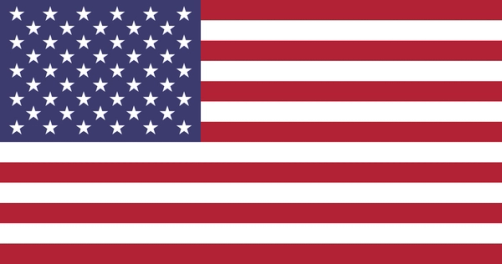Donate to Support Supercluster
Your support makes the Astronaut Database and Launch Tracker possible, and keeps all Supercluster content free.
SUPPORTSupercluster on Patreon
Your support makes the Astronaut Database and Launch Tracker possible, and keeps all Supercluster content free.
SUPPORTThis goes
to space
Starliner Calypso
Starliner
Meet Starliner, Boeing’s crew capsule for NASA’s Commercial Crew Program.
Boeing is one of two companies building commercial human space capsules for NASA and will be the second of the two to start flying humans.
Starliner could carry a crew of seven to and from the International Space Station for missions that could last six months. Boeing says it will be available for private astronaut missions to the ISS or completely private free-flying orbital missions.
Boeing’s Starliner spacecraft, carrying NASA astronauts Butch Wilmore, commander, and Suni Williams, pilot, on a United Launch Alliance Atlas V rocket will launch from Space Launch Complex-41 at Cape Canaveral Space Force Station in Florida.
The Starliner spacecraft, named Calypso, can fly autonomously or be steered manually and is expected to rendezvous and dock with the space station on Wednesday, May 8. Wilmore and Williams will spend about a week at the orbiting laboratory before the crew capsule makes a parachute and airbag-assisted landing in the southwestern United States.
Tech Specs
Launch mass: 13000 kg
Crew capacity: Up to 7
Diameter: 4.56 m (15.0 ft)
Length: 5.03 m (16.5 ft)
Design life: 60 hours (free flight). 210 days (docked)
Flight Heritage
First Flight
A Starliner flew for the first time on December 20, 2019, on the uncrewed Orbital Flight Test (OFT) mission for NASA.
Immediately after launch, a series of critical issues plagued Starliner and nearly resulted in the loss of the ship. Barely able to get to orbit, the week-long flight was aborted.
Starliner landed, not without further critical issues, at White Sands Missile Range, New Mexico, on December 22.
An investigation showed a lack of necessary software testing on Boeing’s part as well as critical oversight failures on NASA’s end. Both organizations have corrected and extensively tested the software on Starliner.
Second Flight
Starliner flew on May 19, 2022, on the second uncrewed Orbital Flight Test-2 (OFT-2) mission for NASA.
Starliner successfully docked with the International Space Station (ISS) on May 21, 2022. After 4 days, the Boeing spacecraft undocked from the space station. About four hours after departing, it successfully deployed its three main parachutes and six airbags. It then touched down onto its airbags, wrapping up the six-day journey, which tested the end-to-end capabilities of the crew-capable spacecraft.
Upcoming First Crew Flight
This upcoming mission will mark the second flight for this Starliner spacecraft, following its inaugural mission in December 2019, Orbital Flight Test-1 (OFT-1). Upon its successful return, NASA astronaut Sunita Williams named the spacecraft "Calypso".
Pilot: Sunita L. Williams.
Spacecraft Commander: Butch Wilmore.
Courtesy of NASA

On this
rocket
Atlas V - N22
A ULA Atlas V rocket will launch astronauts to the International Space Station (ISS) aboard Boeing’s CST-100 Starliner capsule. The Starliner will be launched from Space Launch Complex-41 at Cape Canaveral Space Force Station on Florida’s Space Coast.
Specs
Height: 58.3 m (191 ft) with payload fairing, 52.4 m (172 ft) with Starliner
Diameter: 3.81 m (12.5 ft)
Mass: 590,000 kg (1,300,000 lb)
Stages: 2
Dual-Engine Centaur: For CST-100 Starliner missions, the Centaur upper stage uses two RL10A-4-2 engines for additional thrust to accommodate the Starliner and shape the ascent trajectory toward the Space Station.
Launch Vehicle Adapter (LVA) and Aeroskirt: The LVA attaches the Starliner capsule to the Atlas V rocket and connects to the Centaur upper stage. The aeroskirt extends the Starliner’s aerodynamic surface, improving stability and performance during launch.
The Atlas V rocket is configured uniquely for the Starliner missions, without a payload fairing and with a special aeroskirt at the base of the Starliner. This configuration is designated as N22, which indicates no payload fairings ("N"), two solid rocket motors ("2"), and two engines on the Centaur upper stage ("2"). The dual-engine Centaur upper stage, which provides extra thrust for Starliner, is exclusively used for these missions. Although this variant is specific to Starliner, the dual-engine Centaur has flown more than 160 times on previous Atlas V versions with a single-engine configuration.
The launch of Starliner requires a more gradual ascent than typical Atlas V missions. This is done to ensure the safety of the Starliner and its future crews, allowing them to abort the mission at any point during launch if necessary. The Emergency Detection System (EDS) is in place to monitor various launch vehicle parameters, assessing the health of the rocket. Should any issues arise, the EDS can send an abort signal, allowing the Starliner to safely escape.
Photo courtesy of ULA

From this
launch site
SLC-41 - Cape Canaveral Space Force Station, Florida
Space Launch Complex 41 (SLC-41) is a significant launch site located at Cape Canaveral Space Force Station (CCSFS) in Florida. Originally built in the 1960s, SLC-41 was designed to support the Titan III and Titan IV rocket programs. Throughout its history, the pad has been used for various missions, including the deployment of military and reconnaissance satellites. A notable launch from SLC-41 was the Cassini spacecraft mission, which began its journey to Saturn in 1997.
In the early 2000s, SLC-41 was repurposed to support the Atlas V rocket, operated by United Launch Alliance (ULA). This transition involved extensive upgrades to the pad’s infrastructure and the installation of new ground support equipment to accommodate the Atlas V. These modifications ensured that SLC-41 could meet the requirements of modern space missions.
Under ULA’s management, SLC-41 has hosted a range of important launches, including the Mars Science Laboratory mission, which successfully landed the Curiosity rover on Mars in August 2012, and the launch of GPS III satellites, enhancing global positioning capabilities. The pad has also supported Boeing's CST-100 Starliner capsule, which is part of NASA’s Commercial Crew Program. The Starliner capsule, designed to transport astronauts to and from the International Space Station, has been launched from SLC-41 to support crewed missions.
Looking to the future, SLC-41 is set to support ULA’s Vulcan Centaur rocket. The Vulcan Centaur is intended to replace the Atlas V and Delta IV rockets, marking a new era in ULA’s launch capabilities with enhanced performance and cost-efficiency. The pad’s infrastructure will be further updated to accommodate this next-generation rocket.

will dock
here
ISS - Harmony Module (Forward)
ISS - Harmony forward
The Harmony module, also known within NASA as Node-2, was launched to the ISS in October 2007 on the STS-120 mission of Shuttle Discovery.
Harmony serves as the gateway between the U.S. scientific and living modules and ESA's Columbus laboratory and JAXA’s Kibo lab complex.
The module is equipped with two docking ports for U.S. crew (Dragon and Starliner) and cargo (Dragon) spacecraft and also has one berthing port that can be used for either Northrop Grumman's Cygnus or Japan's HTV cargo crafts.
Photo: The Harmony module, with the forward docking port visible. Credit: NASA

Here's where to view OFT-2
Viewing Sites
- Alan Shepard Park
- A. Max Brewer Parkway Bridge
- Apollo Saturn V Center / Banana Creek
- Cherie Down Park
- Cocoa Beach Pier
- Jetty Park
- Kennedy Space Center Visitor Complex
- LC-39 Observation Gantry
- Lori Wilson Park
- Playalinda Beach
- Rotary Riverfront Park
- Sand Point Park
- Sidney Fischer Park
- Spaceview Park
GET THE SUPERCLUSTER APP
THE SUPERCLUSTER PODCAST
A podcast exploring the amazing milestones that changed space history, the wildest ideas that drive our future, and every development in this new Golden Age of Space.
Donate to support
Your support makes the Astronaut Database and Launch Tracker possible, and keeps all Supercluster content free.
SupportCOPYRIGHT 2021 SUPERCLUSTER LLC



